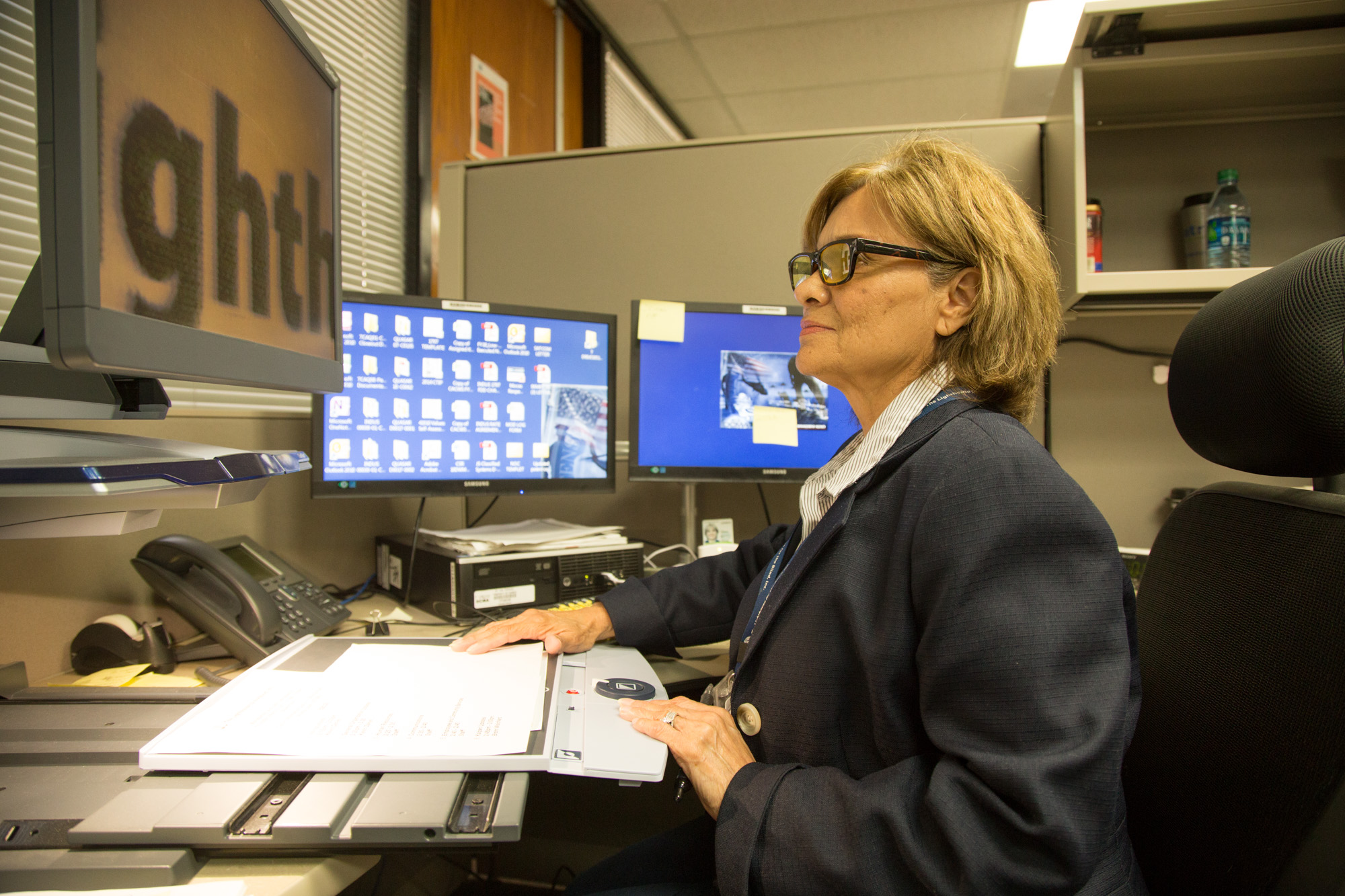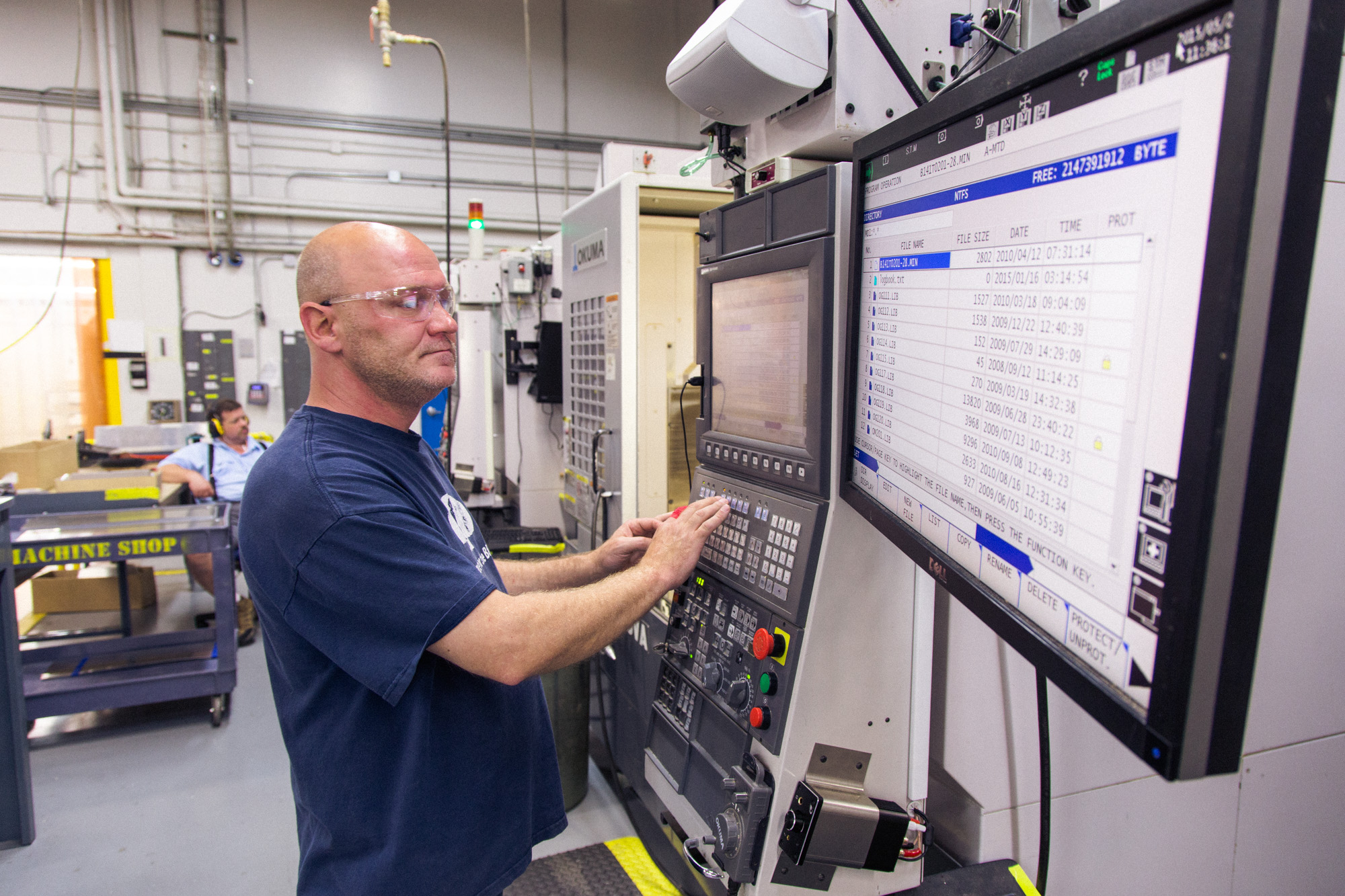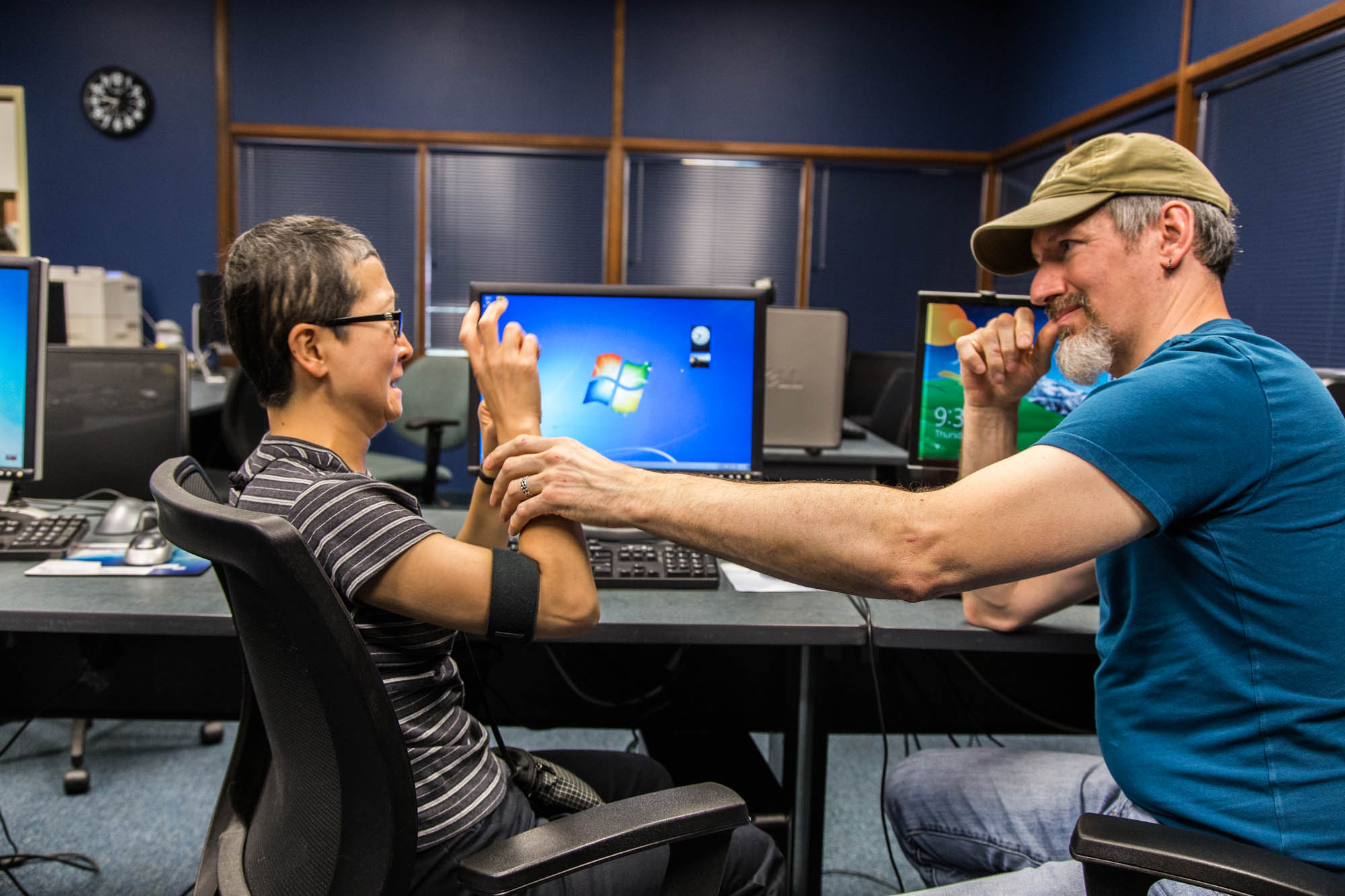A: The Lighthouse for the Blind, Inc. traces its roots back to 1910 and the formation of a social club called Seattle Association of the Blind. The organization incorporated in 1918, focusing on creating employment opportunities for people who are blind in the Seattle area.
A: Out of more than 400 people currently employed at the Lighthouse more than half are blind, DeafBlind, or blind with other disabilities.
A: Legal blindness in the U.S. is defined as either having vision that cannot be corrected beyond A: 20/200 in the better eye or having a visual field restricted to 20 degrees or less in the better eye. Under this definition, experts estimate that approximately 1.3 million people who are blind live in the United States, with over 20 million additional Americans reporting significant vision loss. (source: National Center for Health Statistics 2006).
A: People who are blind and DeafBlind fill a wide range of positions at the Lighthouse, including machinists and machine set-ups, production workers, computer instructors, information technology specialists, web programmers, accountants, receptionists, customer service representatives, administrative assistants, and management staff.
A:Yes, The Lighthouse for the Blind, Inc. has operated a Machine Shop for nearly 60 years, having made aircraft parts for The Boeing Company since 1951.
Today, the Lighthouse is an AS9100- and ISO 2001:9000-certified manufacturer that employs more than 70 machinists who are blind and DeafBlind. A participant in the AbilityOne program, we are associated with the National Industries for the Blind.
Our list of customers includes the Federal Government’s Defense Logistics Agency and various commercial firms, such as The Boeing Company, Triumph Composite Systems, Inc., and BAE Systems.
A: The Lighthouse provides its customers with advanced, one-stop shop machining and fabrication services. Because of the range of technologies we utilize, we’re able to deliver high-quality solutions in low or high volumes. Visit our Manufacturing page for more details.
- Conventional and CNC (Computer Numerically Controlled) Machining
- Injection molding
- Radio frequency sealing and welding
- Hydroform manufacturing
- Sub and final assembly
- Water-jet cutting
- Conventional and CNC shearing
- Metal fabrication and riveting
- Non-metallic machining
- Sawing
- Breakform
- Conventional and CNC turning
A: By utilizing adaptive technology, such as computer screen-reading software (e.g., ZoomText, JAWS (Job Access With Speech)), voicing calipers, large-print keyboards, blind and DeafBlind machinists can operate CNC (computer numeric controlled) machinery to create aircraft parts just as easily as sighted machinists.
It is because of this equipment that our machinists create more than 5,000 unique parts, and 45,000 individual part pieces per month (540,000 per year) for The Boeing Company each year with an acceptance rate of more than 99.9%.
A: For more information on the machining and fabrication services offered by The Lighthouse for the Blind, Inc., visit our manufacturing page, download our capabilities brochure, or contact us using the information below.
The Lighthouse for the Blind, Inc.
2501 S. Plum Street Seattle, WA 98144
Phone: (206) 322-4200
E-mail: pohara@LHBlind.org
A: The Lighthouse for the Blind, Inc. pays a competitive wage based on our annual survey of pay rates throughout the Puget Sound for similar jobs. Each individual at the Lighthouse earns a comparable rate to what someone in the same position earns at another company or nonprofit.
All Lighthouse employees receive a full benefits package including medical and dental coverage, life insurance, paid sick and vacation leave, and a 403b plan.
A: In addition to offering employment opportunities, we also offer Orientation and Mobility (O & M) Training, Computer Training Program for adults who are blind, braille instruction, and a comprehensive DeafBlind Program.
We have three Orientation and Mobility Specialists serving the needs of blind and DeafBlind people. Individualized trainings include such skills as white-cane use, route planning, bus and other transit travel, and supplementary guide dog training. O & M Specialists also provide blind and DeafBlind people with bus kits and other travel aids.
Our Housing Support Program supports blind and DeafBlind individuals in locating suitable, affordable housing. Our Computer Training Program for blind adults focuses on providing students with computer and assistive technology skills for upward mobility and increased independence.
Our nationally acclaimed DeafBlind program includes a completely accessible Annual Retreat for DeafBlind people in Seabeck, Washington on Hood Canal. DeafBlind Community Classes also offer a completely accessible experience for Deaf-Blind people throughout the academic year. Our DeafBlind Technology Training Center is a unique program providing one-on-one computer instruction to DeafBlind people. We also offer Independent Living Classes for people who are DeafBlind.
A: The majority of Lighthouse employment operations are self-funded through manufacturing and product sales to customers including The Boeing Company and the federal government.
Lighthouse seeks philanthropic contributions to fund our Employee and Community Services – including Accommodations and Accessibility support, Interpreting Services, our Braille Literacy Program, Low Vision Services, Orientation and Mobility Training, and our DeafBlind Program. Philanthropic contributions include contributions from corporations, foundations, service organizations, and individual donors. This funding is critical to preserving and expanding the Lighthouse’s existing programs and creating new opportunities for individuals who are blind, DeafBlind, and blind with other disabilities.
Philanthropic support for Lighthouse programs is channeled through The Lighthouse for the Blind, Inc. Foundation, whose sole purpose is to gather community support for fulfillment of our mission. Learn more about how you can support the Lighthouse
A: Our product lines are made specifically for the federal government and commercial contractors. Some of our federal products may be purchased by private individuals, though many items are priced differently for private individuals versus government agencies.
A: Visiting the Lighthouse in person for a tour is the best way. Sign up for a tour at our Seattle facility here https://lhblind.org/take-a-tour/Contact or at Engage@LHBlind.org.
You can also contact our Community Engagement Manager Katy Todd at (206) 973-4003 or ktodd@lhblind.org.
And please follow us on Facebook, Twitter, Instagram, LinkedIn, TikTok, or check out our blog!
Yes, gifts made to the Lighthouse for the Blind are tax deductible as allowable by law. Our Tax ID is 91-0295070.
A: You can make a gift to the Lighthouse a number of different ways. Save postage and time by making a gift on our secure online giving page, or you can mail your gift directly to our offices at:
The Lighthouse for the Blind, Inc.
Attn: Philanthropy
2501 S Plum St
Seattle, WA 98144
To learn more about other ways to give and support the lighthouse, visit this page.

CMS employee Mona Longoria works on closing out contracts in San Diego, CA

Lighthouse Set-Up Specialist Chris Loomis operating an Okuma CNC Mill at our Seattle facility

TTC Instructor Roger Poulin (right) works with student Mae Lynn Mullen in the Seattle facility’s computer lab
